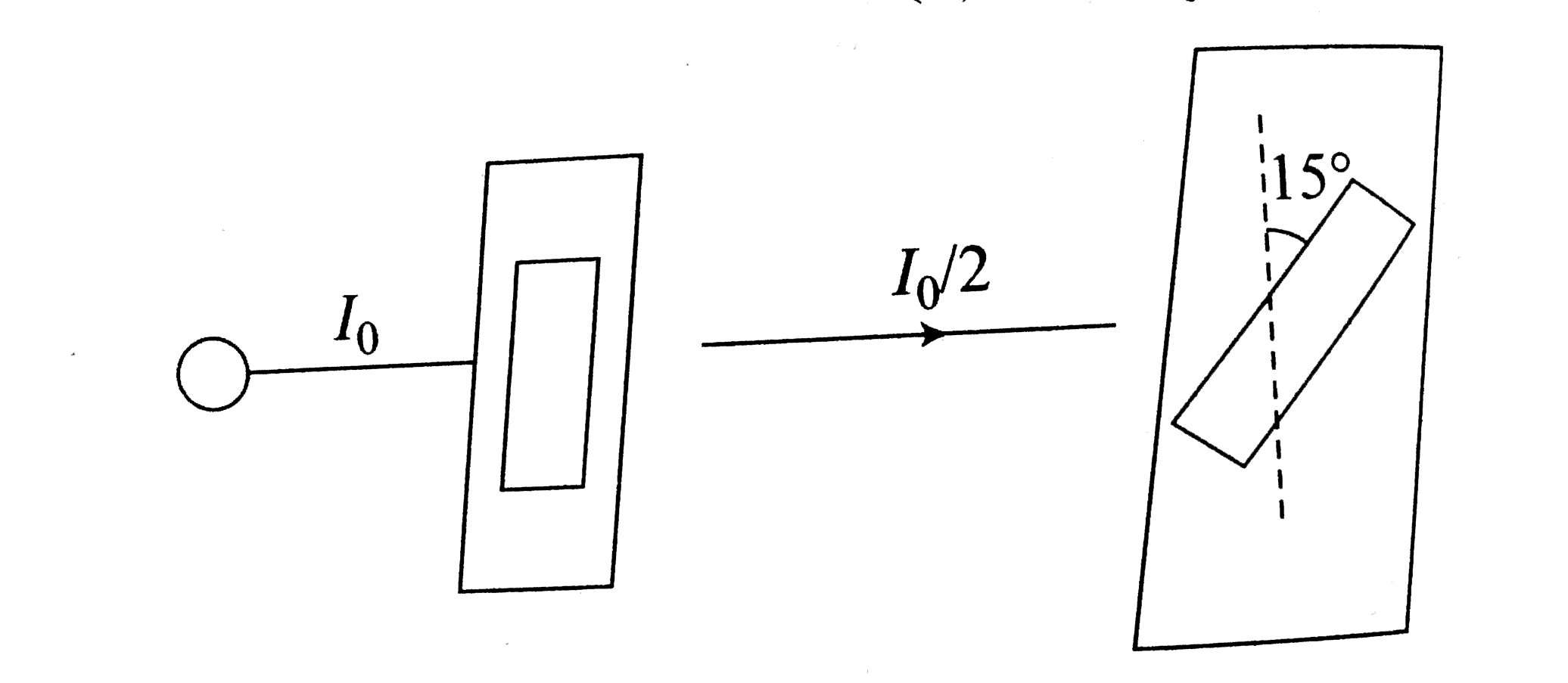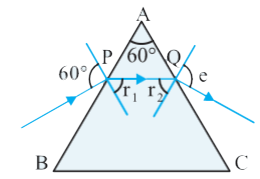Three nicols prisms are placed such that, first and third are mutually perpendicular. Unpolarised light is incident on first nicol's prism, the intensity of light emerges from third nicol's prism is 1/16 the intensity of incident light. Find the angle between first and second nicol's prisms.
[22.5∘]
Step by step video, text & image solution for Three nicols prisms are placed such that, first and third are mutually perpendicular. Unpolarised light is incident on first nicol's prism, the intensity of light emerges from third nicol's prism is 1//16 the intensity of incident light. Find the angle between first and second nicol's prisms. [22.5^(@)] by Physics experts to help you in doubts & scoring excellent marks in Class 12 exams.
Updated on:21/07/2023Topper's Solved these Questions
- WAVE OPTICSBOOK - PHYSICS GALAXY - ASHISH ARORACHAPTER - WAVE OPTICSEXERCISE - Practice Exercise 6.2
1 Videos
- WAVE OPTICSBOOK - PHYSICS GALAXY - ASHISH ARORACHAPTER - WAVE OPTICSEXERCISE - Practice Exercise 6.3
1 Videos
- WAVE OPTICSBOOK - PHYSICS GALAXY - ASHISH ARORACHAPTER - WAVE OPTICSEXERCISE - Practice Exercise 6.1
1 Videos
- THERMODYNAMICS LAWS & SPECIFIC HEATS OF GASES BOOK - PHYSICS GALAXY - ASHISH ARORACHAPTER - THERMODYNAMICS LAWS & SPECIFIC HEATS OF GASES EXERCISE - Practice Exercise 3.4
11 Videos
- WAVES BOOK - PHYSICS GALAXY - ASHISH ARORACHAPTER - WAVES EXERCISE - Unsolved Numerical Problems for Preparation of NSE, INPhO & IPhO
135 Videos
Similar Questions
A ray of light incident normally on the first face of a glass prism of refractive index 1.6 just emerges from the other face. Find the angle of the prism.
View SolutionA ray of light is incident on the glass prism at an angle of 40∘. Find the angle of emergence, if the angle of prism is 60∘ and refractive index is 1.5.
View Solution
Knowledge Check
Assertion: Nicol prism is used to produce and analyse plane polarised light.
Reason: Nicol prism reduces the intensity of light to zero.A(a) If both assertion and reason are true and reason is the correct explanation of assertion.B(b) If both assertion and reason are true but reason is not the correct explanation of assertion.C(c) If assertion is true but reason is false.D(d) If assertion and reason both are false.An unpolarised beam of intensity I0 is incident on a pair of nicols making an angle of 60∘ with each other. The intensity of light emerging from the pair is
AI0BI0/2CI0/4DI0/8Light is incident on a polarizer with intensity I0. A second prism called analyzer is kept at a angle of 15∘, from the first polarizer then the intensity of final emergent light will be
 A(a) 0.5I0B(b) 0.3I0C(c) 0.46I0D(d) 0.83I0
A(a) 0.5I0B(b) 0.3I0C(c) 0.46I0D(d) 0.83I0
A student is performing an experiment with two triangular glass prisms. He places the first glass prism on its base. The second glass prism is placed upside down behind the first glass prism. When a beam of white light is allowed to fall on the first glass prism, then a patch of ordinary white light is obtained on a screen placed behind the second glass prism.
(a) Draw a ray diagram to show the above· arrangement of two glass prisms and the light passing through them.
(b) What is the function-of (i) first prism, and (ii) second prism, in this arrangement?
View SolutionA light beam is incident on a rectangular glass plate (μ=1.54) The reflected light OB passes through a nicol prism.
On observing the transmitted light while rotating the prism, it is seen that

View SolutionA ray of light is incident on one face of a prism (m=√3) at an angle of 60∘. The refracting angle of the prism is also 60∘. Find the angle of emergence .

View SolutionIf the light waves pass through a nicol prism then all the oscillations occur only in one plane, such beam of light is called as
View SolutionThe angle of prism is 60∘ and its refractive index is 1.5. There will be no emergent light if the angle of incidence on the first face is
View Solution
